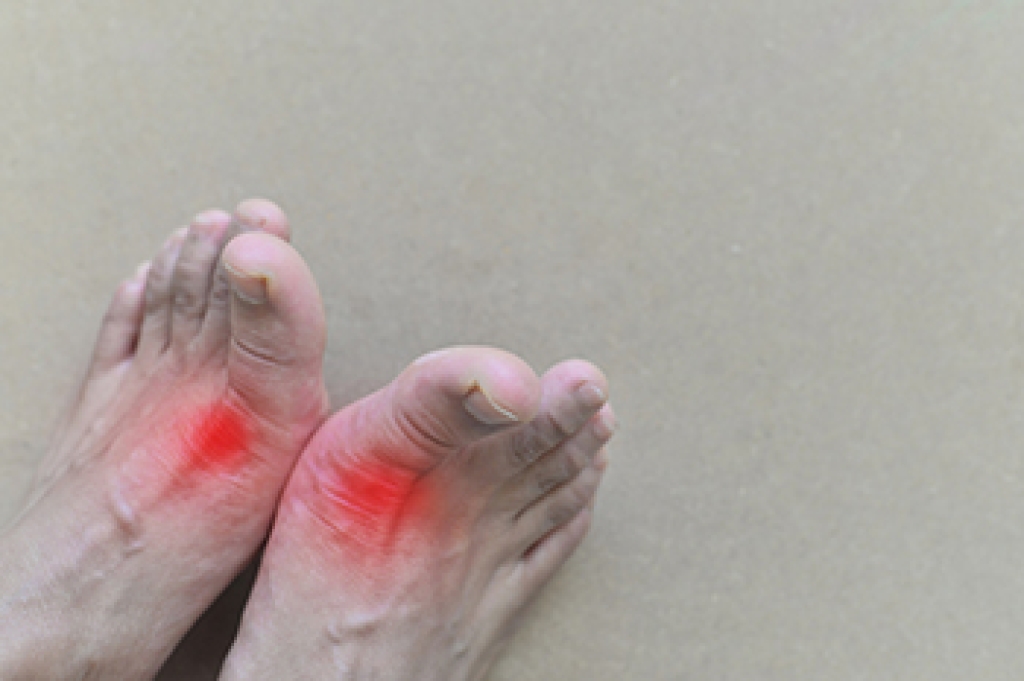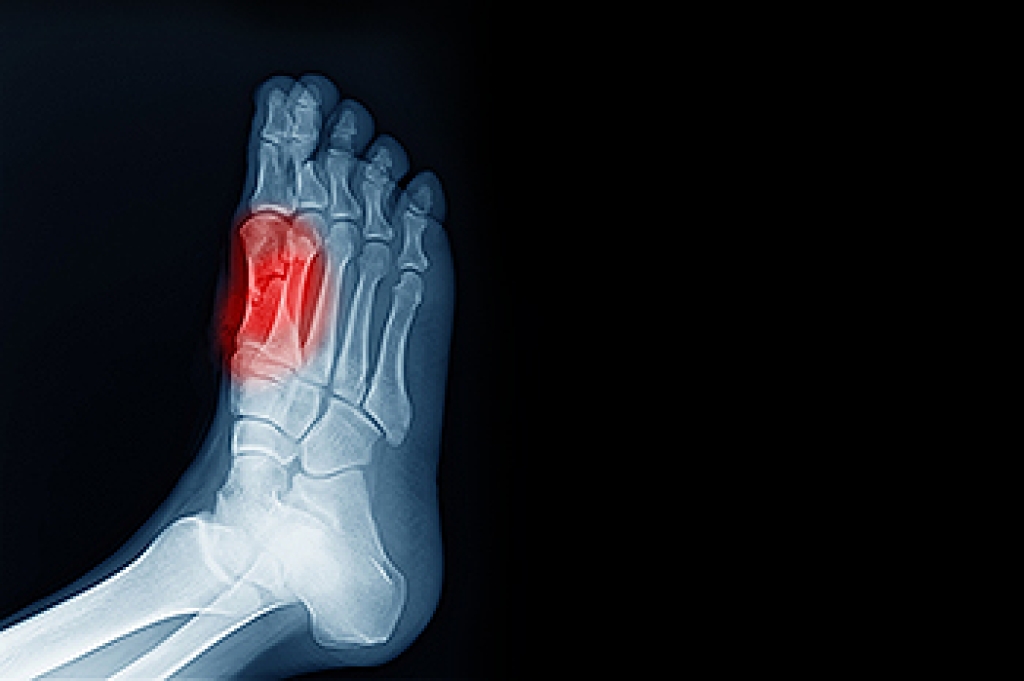
Chronic gout occurs when uric acid crystals continue to build up in joints, causing pain and inflammation that do not fully resolve between flares. Symptoms include persistent joint pain, swelling, redness, stiffness, and limited movement, most often in the big toe. The joint may look enlarged, shiny, or misshapen, and firm lumps called tophi may develop under the skin. It often feels deeply sore, throbbing, or tender, even with light pressure or walking. Causes include long-term high uric acid levels, genetics, kidney disease, and diet factors. A podiatrist can help from the start by evaluating symptoms, reviewing medical history, examining joint changes, and coordinating imaging or lab testing for diagnosis. Treatment may include pressure relief, joint protection, flare management, and collaboration with other providers on long-term uric acid control. Early podiatric care supports mobility, reduces complications, and improves comfort. If you are dealing with ongoing pain from gout, it is suggested that you make an appointment with a podiatrist
Gout is a painful condition that can be treated. If you are seeking treatment, contact one of our podiatrists from APEX Foot & Ankle Center. Our doctors will treat your foot and ankle needs.
What Is Gout?
Gout is a form of arthritis that is characterized by sudden, severe attacks of pain, redness, and tenderness in the joints. The condition usually affects the joint at the base of the big toe. A gout attack can occur at any random time, such as the middle of the night while you are asleep.
Symptoms
- Intense Joint Pain - Usually around the large joint of your big toe, and it most severe within the first four to twelve hours
- Lingering Discomfort - Joint discomfort may last from a few days to a few weeks
- Inflammation and Redness -Affected joints may become swollen, tender, warm and red
- Limited Range of Motion - May experience a decrease in joint mobility
Risk Factors
- Genetics - If family members have gout, you’re more likely to have it
- Medications - Diuretic medications can raise uric acid levels
- Gender/Age - Gout is more common in men until the age of 60. It is believed that estrogen protects women until that point
- Diet - Eating red meat and shellfish increases your risk
- Alcohol - Having more than two alcoholic drinks per day increases your risk
- Obesity - Obese people are at a higher risk for gout
Prior to visiting your podiatrist to receive treatment for gout, there are a few things you should do beforehand. If you have gout you should write down your symptoms--including when they started and how often you experience them, important medical information you may have, and any questions you may have. Writing down these three things will help your podiatrist in assessing your specific situation so that he or she may provide the best route of treatment for you.
If you have any questions, please feel free to contact our offices located in Fort Myers, Shellpoint, and Naples, FL . We offer the newest diagnostic and treatment technologies for all your foot care needs.



